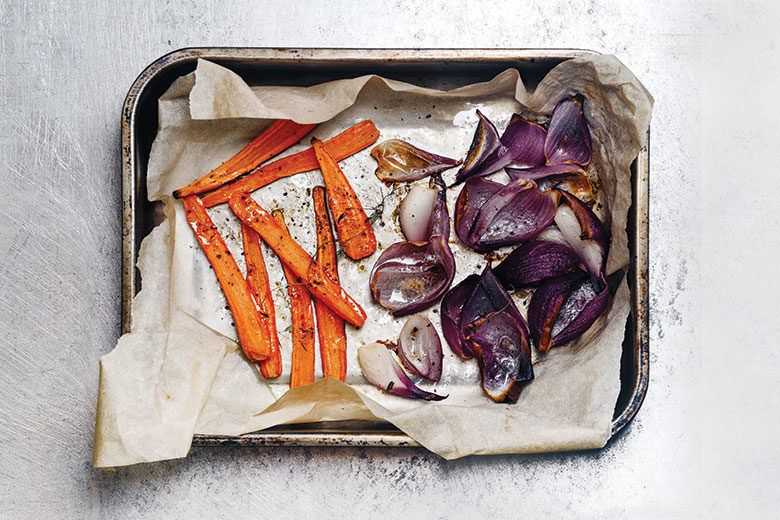
Whether you call them cookie sheets, baking sheets, jelly roll pans or sheet pans, these classic kitchen tools can be found in nearly every home and professional kitchen alike. A go-to for baking cookies and cakes, sheet pans also can be used for making breads and pastries, roasting vegetables and preparing full meals.
Professional foodservice sheet pans usually are a standard full size of 18-by-26-by-1 inches and half-sheet size of 13-by-18-by-1 inches. Sheet pans often are made of either aluminum or steel, since these materials can conduct and hold heat during the baking process. A few features set the styles apart:
Cookie Sheets
Although they often are referred to as baking sheets, cookie sheets differ in their shape and style. While baking sheets have a rolled edge, cookie sheets typically do not. Aside from a raised lip on one or two sides of the pan, cookie sheets are flat, which gives them a larger surface area for baking, meaning more cookies can be made at once. This design also helps cookies slide from the pan without breaking or damaging their shape.
Aluminum Baking Pans
An affordable option, aluminum baking pans are widely available in stores and online. They have rolled edges and vary in size from quarter to half and full pans. Aluminum baking pans easily conduct and hold heat, making them a good option for foods such as sheet cakes, shortbreads or roasted vegetables. However, aluminum also scratches and dents easily. Another downfall is they can give a slightly metallic taste to foods, especially tomatoes, citrus fruits and other acidic foods. To avoid this, line pans with parchment paper before cooking.
Insulated Pans
A circulating layer of air is created by enclosing the area below the baking surface, helping reduce hot spots and preventing burnt bottoms on foods such as delicate and thin cookies. Foods may take longer to bake on insulated pans; adjust cooking time as needed. Insulated pans are not ideal for creating browned or crispy edges but work well for soft cookies and bread crusts.
Nonstick Baking Sheets
Nonstick baking sheets can be light or dark in color, and dark-colored pans cook and brown more quickly than aluminum baking sheets. They also allow easy removal of cookies, vegetables or meats from the baking surface. Nonstick coating is subject to wear and tear, so pans need to be replaced when the surface area becomes scratched.
Regardless of which style of sheet pan you choose, line it with parchment paper or a silicone baking mat before use to help maintain its quality and make cleanup easier. Cleaning dirty sheet pans varies by type: Aluminum sheets can be washed in hot water with soap and a brush or nylon scouring pad for stuck-on messes; nonstick pans should only be cleansed with a soft sponge or — after soaking the pan in warm water for an hour — use a dish towel or washcloth. For lots of build-up or stuck-on food, create a paste with warm water and baking soda, coat pans with the mixture and let sit in the pan for at least 30 minutes, then gently scrub until spots are removed. Dry pans immediately to prevent rust or discoloration.
References
Campbell S. Glossary of Materials: Metals. Cooks’ Tools. New York, NY. Bantam Book; 1980:277.
Common Baking Mistakes. Cooking Light website. Published April 12, 2013. Accessed October 25, 2018.
Herbst ST, Herbst R. The Deluxe Food Lover’s Companion. Hauppauge, NY: Barron’s Educational Series, Inc.; 2009.








